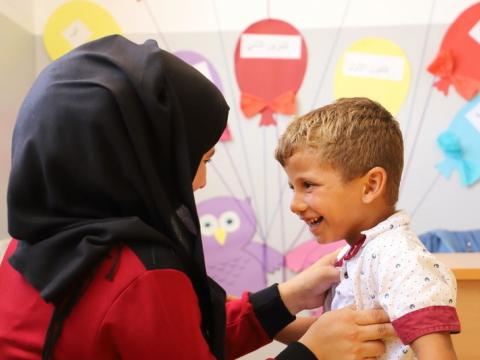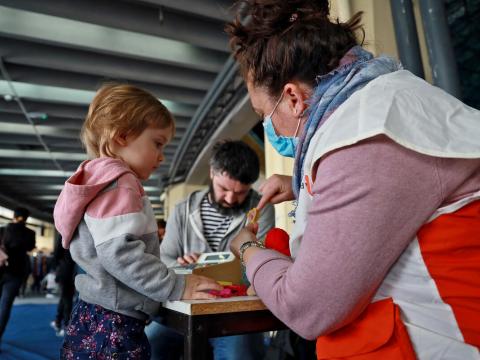
Piecing peace together – three things children need now
By Bill Forbes, Child Protection and Participation Global Lead, World Vision International
Once again this week, we are seeing a brutal reminder that children pay the price for adult wars. They are the most vulnerable, and continue to be – at best – an afterthought. Child protection saves lives. It seems obvious, and yet we also seem to have to remind those in power, those who escalate conflicts, those who respond, and those who fund humanitarian responses, of this. It doesn’t have to be this way.
Every year, 420 million children – more than the entire population of the United States, the United Kingdom and Australia combined – don’t just have to live with the effects of the conflict into which they were born, or from which they have escaped. They don’t just have constant nightmares and trouble forgetting the blood and injuries they have seen or experienced. They don’t just weep for their lost mums and dads, or the brothers and sisters they left behind or saw killed. They also have to worry about whether they’ll be taken by strangers on their way home, whether they will be abused as stress in the family increases, whether they will be forced to work in hazardous child labour to help their families survive, or whether their tents will collapse when the weather closes in or the bombs start falling again. They cannot comprehend that a school or hospital might be safe places of learning and healing. They live in anxiety about when the money or food or water will run out. They live in fear they’ll be forced to fight in adult wars, again.
And this situation is at its all-time worst[1]. We strongly and firmly believe in World Vision that it does not have to be this way. I met some of these children last month when I visited several World Vision projects in the Bekaa Valley of Lebanon where more than 350,000 Syrians have settled, half of them children. They are facing a range of challenges from the seemingly insignificant to life-changing; limited or no access to work and education, extreme poverty, depression and other psychosocial problems.
Protecting children from violence in any context is hard work, and protecting children who have been affected by armed conflict from violence is even harder. But it is possible for this work to make a difference. Here are three ways to do it:
1. Consult with children
We can develop a general picture of violence against children from data and research, but to truly understand it in any given context, we need to learn from children directly. In 2018, World Vision spoke to more than 1,200 Syrian refugee children in Lebanon, Jordan and Syria. More than half said they did not have access to health care, were working, not attending school, and living in unsafe housing. They talked about intangible impacts that we could not have known without listening to them, such as difficulty processing grief and change, feeling powerlessness when they cannot help their families. Listening to children helps us more holistically care for them, and better and more fully protect them.
2. Strengthening existing systems for children
At World Vision we use a Child Protection Systems Approach that works to:
- empower children with life skills, resilience and meaningful participation
- transform attitudes and behaviours of parents, faith leaders, faith communities, and community members
- strengthen formal and informal services and support mechanisms to prevent, protect and respond
- improve laws and accountability through advocacy at all levels
In conflict settings child protection systems can be weak or insufficient, but we have found that even in the most resource-poor contexts affected by conflict, child protection systems exist – this is what it means to work across the humanitarian-development-peace-building nexus. When asked about who protects children from violence in eastern Democratic Republic of Congo, children and adults identified families as the first line of defence. They also talked about the influence of faith leaders, their friends and health clinics. These are the individuals and groups that can be strengthened to build up the protective environment for children.
3. Changing things at a global level
Globally, there are some critical platforms seeking to better protect children in conflict. For example, the Global Partnership to End Violence Against Children is a multi-sector platform launched in 2016 focused on one thing: making the world safe for children. As part of this, 26 Pathfinding countries are developing costed national plans of action to end violence against children. These plans need to be critical points for advocacy and partnership. Other key global frameworks that outline holistic interventions and services which can make a difference in the lives of children include, INSPIRE, WHO Global Action Plan, the Nurturing Care Framework. and the Child Protection Minimum Standards in Humanitarian Action, which launched an important update to the standards this week. Frameworks like these are helping us to build safer, healthier societies for children by looking at the global picture and recognising the needs and interdependencies of every layer of both the child health and protection systems.
When we make a positive difference in the lives of children affected by armed conflict, we change their futures, and their entire communities.
[1] Taken from Report of the Secretary General on Armed Conflict, 26 July 2019.
